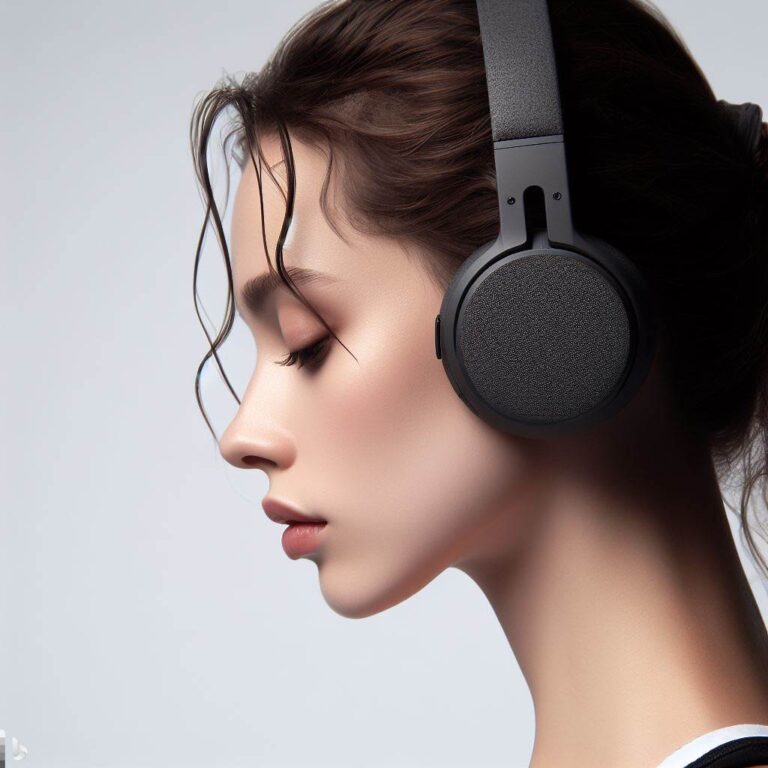Roku vs Apple TV: Unbiased Comparison of Streaming Platforms
In the ever-growing world of streaming devices, two major players have consistently stood out among the rest: Roku and Apple TV. Both offer a variety of features and options for accessing a wealth of streaming content, making the choice between them a challenge for many consumers. This article aims to provide a clear comparison of these two popular devices, exploring their unique features, benefits, and possible drawbacks in order to help potential buyers make an informed decision.
Each device has its own distinct advantages and disadvantages, with Roku being known for its affordability and accessibility, while Apple TV is often praised for its sleek design and seamless integration with other Apple products. As the streaming landscape continues to evolve, both companies have made strides in updating their devices to stay competitive and appealing to a wide range of users.
Key Overview: Roku vs Apple TV
Roku Essentials
Roku is a popular choice for a streaming device, known for its affordability and ease of use. There are various models available, each offering different features and price points. The Roku streaming devices support various content channels and streaming services, ensuring you can access your favorite shows and movies with ease. Some essential features of Roku devices include:
- Wide App Library: Roku offers a vast library of apps and channels, including popular streaming services such as Netflix, Hulu, Amazon Prime Video, and more.
- User-friendly Interface: The Roku interface is well-organized and easy to navigate, making it simple for users of all ages to find their desired content.
- Affordability: Roku devices are generally less expensive than their competitors, offering options for budget-conscious customers.
- Customizable Home Screen: Users can personalize their home screen by adding their favorite channels and rearranging the layout to suit their preferences.
Apple TV Essentials
Apple TV is a streaming device developed by Apple Inc., integrating seamlessly with other Apple products and services. With a sleek design and high-quality performance, Apple TV offers an enjoyable streaming experience for those willing to invest in its premium price point. Some essential features of Apple TV devices include:
- Integration with Apple Ecosystem: Apple TV works seamlessly with other Apple devices, such as iPhones, iPads, and Macs, allowing users to share content through AirPlay and access their iTunes library.
- Siri Voice Control: Apple TV comes with Siri functionality, which enables users to control the device using voice commands, making the user experience even more enjoyable and convenient.
- High-Quality Performance: Apple TV offers high-quality streaming and impressive processing capabilities, ensuring a smooth and enjoyable streaming experience.
- App and Gaming Options: In addition to popular streaming services, Apple TV also provides access to a wide range of apps and games, allowing users to do more than just stream content.
In summary, both Roku and Apple TV offer unique advantages in the streaming device market. Roku focuses on affordability and a user-friendly experience, while Apple TV emphasizes seamless integration with the Apple ecosystem and advanced features. Ultimately, the best choice for a streaming device depends on the user’s specific needs and preferences.
Design and Interface
Roku Design and Interface
Roku devices are generally compact and have a minimalist design, making them easy to integrate into any home entertainment setup. The interface of Roku’s smart TV platform is user-friendly and straightforward. It allows for simple navigation through a grid layout, showcasing various channels and apps that users can access. The well-organized layout is complemented by customizable options, enabling users to prioritize their frequently used channels and apps.
Roku’s remote control is compact and easy to use, with only essential buttons to eliminate confusion. Optional voice search functionality is available on some models, allowing users to find content more efficiently.
Apple TV Design and Interface
Apple TV boasts a sleek, premium design, which is reflective of Apple’s signature aesthetic. Its compact form factor and minimalist appearance suit most home entertainment setups. Apple TV uses the tvOS operating system, which offers a smooth and visually appealing interface. It is designed with a parallax effect that provides a sense of depth when navigating through apps and content.
The Apple TV interface is characterized by its ease of use and fluidity, taking advantage of simple gestures and voice commands through the Siri Remote, which features a touchpad and a microphone. The remote allows users to control the interface effortlessly and find their desired content quickly.
In both Roku and Apple TV devices, their respective design and interface contribute to a seamless smart TV experience, prioritizing user-friendliness and efficiency for viewers.
Device Performance
Performance of Roku
Roku offers a range of streaming devices, from entry-level to high-performance models. All devices provide efficient streaming performance, with higher-end models like the Roku Ultra and Roku Streaming Stick+ offering 4K and HDR support. The Roku Ultra, in particular, also supports Dolby Vision, ensuring an enhanced visual experience.
With speedy processors, Roku devices generally provide smooth navigation through the interface and efficient loading of apps and content. Some models also come with Ethernet ports for a more stable internet connection, reducing buffering time during streaming. Here are some key features of Roku devices:
- 4K and HDR support: Available in select models like Roku Ultra and Roku Streaming Stick+
- Dolby Vision: Supported by Roku Ultra
- Ethernet port: Found in certain models for improved internet connectivity
Performance of Apple TV
Apple TV offers two models, the Apple TV HD and Apple TV 4K. The latter supports 4K resolution, HDR10, and Dolby Vision, ensuring a high-quality visual experience. Both devices run on powerful processors, with the Apple TV 4K featuring the A12 Bionic chip, enabling exceptional performance in streaming, as well as running games and other applications.
Similar to Roku, Apple TV devices also have Ethernet ports to ensure stable internet connections. Apple TV’s tvOS interface is known for being user-friendly, with smooth navigation and quick app loading times. Major features of Apple TV devices include:
- 4K, HDR10, and Dolby Vision support: Available in Apple TV 4K
- A12 Bionic chip: Featured in Apple TV 4K for powerful processing
- Ethernet port: Included in both models for improved internet connectivity
Both Roku and Apple TV offer competitive device performance, with smooth and efficient streaming capabilities. High-end models provide advanced visual features like 4K, HDR, and Dolby Vision, ensuring a great viewing experience.
Available Apps and Features
When it comes to the available apps and features on Roku and Apple TV, both platforms offer an extensive selection for users to choose from. The Roku platform has a competitive edge with its vast library of apps, also known as channels, which currently totals over 5,000. Apple TV, on the other hand, has a smaller but well-curated selection of apps in its tvOS App Store.
Both platforms support popular streaming services such as Netflix, Amazon Prime Video, Hulu, HBO, Disney+, and YouTube. Users can easily find and install these services on either device and enjoy their favorite content without any issues. Additionally, each platform offers a range of other entertainment apps, such as sports, news, and music services, ensuring that there is something for everyone.
In terms of features, Roku has a user-friendly interface that offers personalized recommendations based on viewing habits. The platform also includes a universal search feature, which allows users to search for content across various streaming services. Another notable feature is the Roku Channel, a free ad-supported streaming service that offers on-demand content. Similarly, Apple TV has a well-designed interface with the Up Next feature, which keeps track of what users are watching and suggests new content accordingly. Additionally, Apple integrates its services seamlessly, allowing users to easily access content from their iTunes library, Apple Music, and iCloud Photo Library.
Voice control is a notable feature on both platforms. Roku devices are compatible with Amazon Echo, Google Home, and Siri-enabled devices, while Apple TV provides Siri integration with the Siri Remote. This allows users to search for content, launch apps, and control playback using voice commands on both platforms.
App and feature compatibility can vary across different Roku and Apple TV models. Some older devices may not support specific services or features, so it’s crucial for users to research their specific device to ensure it meets their needs. Both companies continue to update their devices and platforms to offer users the best possible experience when streaming content.
Price and Value for Money
Cost of Roku
Roku offers a wide range of devices with varying price points, making it accessible for different budgets. The Roku Express, their most affordable option, can be found for around $29.99. As users look into more advanced models like the Roku Streaming Stick+ and the Roku Ultra, the price ranges from $49.99 to $99.99. These options offer features such as:
- 4K and HDR support
- Voice control
- Enhanced remote with TV controls
The price difference mainly depends on the device’s capabilities and features.
Cost of Apple TV
Apple TV, on the other hand, has a higher starting price compared to Roku devices. The Apple TV HD starts at $149, while the Apple TV 4K model is available at $179 and $199 for 32GB and 64GB storage respectively. It is important to note that both Apple TV models include:
- 4K and HDR support
- Siri voice control
- Apple TV app integration
When comparing the costs, Apple TV is considered a more premium option, with higher prices and additional features.
In conclusion, while the Roku devices offer a range of options for varying budgets, Apple TV is geared towards individuals who are willing to spend more for a premium experience. It’s essential to consider the features and performance in evaluating the value for money of each device.
Remote Control and Functionality
Roku Remote Features
The Roku remote offers users a simple and ergonomic design, allowing for easy navigation and control. Some models include a voice remote, enabling users to search for content by speaking into the built-in microphone. The enhanced functionality offered by the Roku voice remote allows quick access to specific apps, channels, and movies. Additionally, the Roku remote features shortcut buttons to popular streaming services, enabling users to launch apps faster.
With the Roku mobile app, users can use their smartphones as a remote, allowing them to stream content on their Roku devices using Wi-Fi. The app also supports voice search functionality and private listening, providing a more seamless user experience.
Apple TV Remote Features
The Apple TV remote, known as the Siri Remote, offers a sleek and minimalist design. It’s equipped with a touch surface, allowing users to easily navigate through content by swiping and scrolling. Moreover, it supports voice control using Siri, providing users with the ability to search for content using their voice and perform commands such as pausing and rewinding videos.
Functionality-wise, the Siri Remote is equipped with a menu button, play/pause button, and a home button. Additionally, dedicated volume controls make it easy to control the audio output of your Apple TV.
One notable feature of the Siri Remote is its compatibility with Apple’s ecosystem. When paired with other Apple devices, the remote can be used to control Apple Music and HomeKit-enabled smart gadgets, providing a unified experience across multiple devices.
Voice Assistance and Control
Voice Assistance with Roku
Voice assistance on Roku devices is primarily conducted through the Roku Voice Remote or the free Roku Mobile App on a smartphone. Users can search for content, launch apps, control playback, and adjust the volume using their voice.
With the Roku Mobile App, users can not only access the voice search feature but also use their smartphone’s keyboard to enter text on the device. The app is available for both Android and iOS devices, including iPhones.
However, it is important to note that Roku voice assistance doesn’t offer the same level of integration with other smart home devices and services as other voice assistants on the market. Users will find the voice features on Roku devices focused on content and playback, rather than connecting to other devices or answering general questions.
Voice Assistance with Apple TV
Apple TV offers voice assistance through Siri, Apple’s well-established and popular voice assistant. Siri can be accessed on Apple TV through the Siri Remote and allows users to search for content, control playback, and adjust settings.
In addition to basic voice commands, Siri on Apple TV boasts a more comprehensive set of features when compared to Roku’s voice assistance. With Siri, users can ask about the weather, sports scores, and other general queries alongside content and playback controls.
For iPhone owners, Siri’s integration with other Apple devices and services is a notable advantage. Users can control their Apple TV through Siri on their iPhone and receive seamless continuity between devices. Furthermore, Apple TV’s support for HomeKit allows users to control their smart home devices using voice commands through Siri.
Integration with Other Devices
Integration of Roku
Roku devices integrate well with various platforms and devices. Users can cast content from their iOS and Android devices using supported apps. Roku also offers a convenient mobile app for controlling the device, searching for content, and using private listening features.
Roku supports some smart home integrations, allowing users to control their devices through voice commands via Amazon Alexa, Google Assistant, and certain models even support Apple HomeKit. However, the integration with Apple devices like Mac and iPad is limited compared to the seamless features offered by Apple TV.
Integration of Apple TV
Apple TV provides a seamless integration with other Apple devices, such as Mac, iPad, and iPhone. This unified ecosystem offers notable features like AirPlay 2, which allows users to cast content from their iPhone, iPad, or Mac to the Apple TV easily.
Apple TV also integrates with Apple HomeKit, enabling users to control their smart home devices through the Apple TV interface or by using Siri voice commands. Furthermore, Apple TV offers multi-user support, family sharing, and the ability to use your iPhone or iPad as a remote control or game controller. This creates a more cohesive and connected experience for users who already own Apple devices.
Streaming Quality and Resolution
Streaming Quality on Roku
Roku devices offer a wide range of streaming quality and resolution options. Most models support 1080p HD streaming, while the higher-end Roku Ultra, Roku Premiere, and Roku Streaming Stick+ devices are capable of streaming 4K content. For the best streaming quality, it’s recommended to use a high-speed HDMI cable, which can support 1080p and 4K resolutions.
Roku devices automatically detect the best resolution supported by the TV and choose the optimal setting. However, users can also manually adjust the resolution settings in the Roku menu to best fit their preferences.
Streaming Quality on Apple TV
Apple TV devices provide excellent streaming quality and resolution options as well. The Apple TV HD supports 1080p HD streaming, while the more recent Apple TV 4K model offers 4K streaming capabilities. To ensure the highest quality streaming experience, users should connect their Apple TV device to their TV using a high-speed HDMI cable that supports 4K resolutions.
Similar to Roku devices, Apple TV automatically detects the optimal resolution supported by the connected TV. Users can also adjust the resolution settings manually in the Apple TV menu if desired.
In both Roku and Apple TV devices, streaming quality is dependent not only on the device itself but also on the quality of the internet connection and subscription plans for streaming services. To achieve a seamless 4K streaming experience, users should consider having a high-speed internet connection and subscribing to streaming services that offer 4K content.




